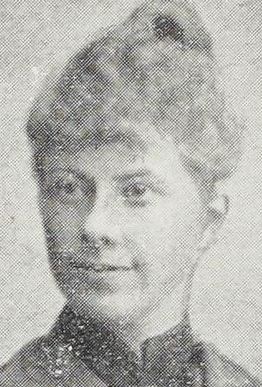Emily Arnesen facts for kids
Quick facts for kids
Emily Arnesen
|
|
|---|---|

Emily Arnesen (before 1914)
|
|
| Born | 14 June 1867 Kristiania (now Oslo)
|
| Died | 13 August 1928 (aged 61) Oslo
|
| Education | University of Kristiania, University of Zurich |
| Known for | Studies on sponges |
| Scientific career | |
| Fields | Zoology |
| Institutions | Kristiania |
| Doctoral advisor | Arnold Lang |
| Influences | Johan Hjort, Max Carl Wilhelm Weber |
Emily Arnesen was a smart Norwegian scientist who lived from 1867 to 1928. She was a zoologist, which means she studied animals. Emily was especially famous for her work on sponges, which are simple sea animals. She was also the second woman in Norway to earn a special high-level university degree called a doctorate.
Contents
Emily Arnesen's Early Life
Emily Arnesen started studying at the Royal Frederick University in her hometown of Kristiania (now Oslo) in 1891. She was interested in science. She had to leave after a year to work as a governess (a private teacher) for a family in Stockholm. Emily often worked as a governess to earn money while she studied.
While in Stockholm, Emily took classes that made her very interested in both zoology (the study of animals) and botany (the study of plants). When she returned to the university in Kristiania, Emily taught classes and private students. In her free time, she studied zoology with a famous scientist named Johan Hjort. After three years, she left the university to work in science labs.
Emily Arnesen's Adult Life and Studies
In 1894, Emily tried to study zoology in a lab in Berlin, but she was not accepted. After this, she taught in schools in Kristiania. During the school year, she also worked in the local zoological laboratory. In the summers, she studied coastal animals at biological stations along the Norwegian coast.
In 1901, Emily received a special scholarship. This allowed her to travel to Zurich in Switzerland. There, she completed her doctorate studies. She studied the blood vessel system of leeches. Her supervisor was an anatomist named Arnold Lang. Emily earned her doctorate degree in 1903.
After getting her doctorate, Emily spent four months at the zoological museum in Amsterdam. She worked with Max Carl Wilhelm Weber. Here, she was in charge of a collection of sponges. She had become very interested in sponges while working on the coasts of Norway. In 1905, Emily became a conservator at the Kristiania zoological museum. A conservator helps take care of and organize museum collections. She held this job until 1926, when she retired because of poor health. From 1906 to 1913, she also gave lectures about invertebrates (animals without backbones) at the Royal Frederick University.
Emily Arnesen's Social Involvement
Besides her work in biology, Emily Arnesen was also active in social groups and politics. She cared a lot about the rights of women, especially their right to vote. She was a member of the main committee of the Norwegian Women's Union. Emily often wrote articles for newspapers. She wrote about her scientific work and important social issues.
Emily Arnesen's Published Works
Emily Arnesen published her first scientific paper in 1898. It was about the anatomy (body structure) of corals. However, she is best known today for her important work on sponges. She was probably the first Norwegian scientist to study sponges. Not many Norwegians have focused on these animals since her time.
Emily published many papers about sponges between 1901 and 1920. Her paper from 1903, which discussed where different sponges are found around the world, was especially important. Emily also wrote a textbook for high school zoology classes. This book focused a lot on Charles Darwin's ideas about evolution. In 1912, she published the first guidebook for the zoological museum. This guide explained the different groups of invertebrates and the collections on display.
Emily Arnesen's contributions to the study of sponges are honored in the names of several sponges. These include Haliclona arnesenae, Anchinoe arneseni (which is now called Phorbas perarmatus), and Clathrina arnesenae.
See also
- In Spanish: Emily Arnesen para niños

